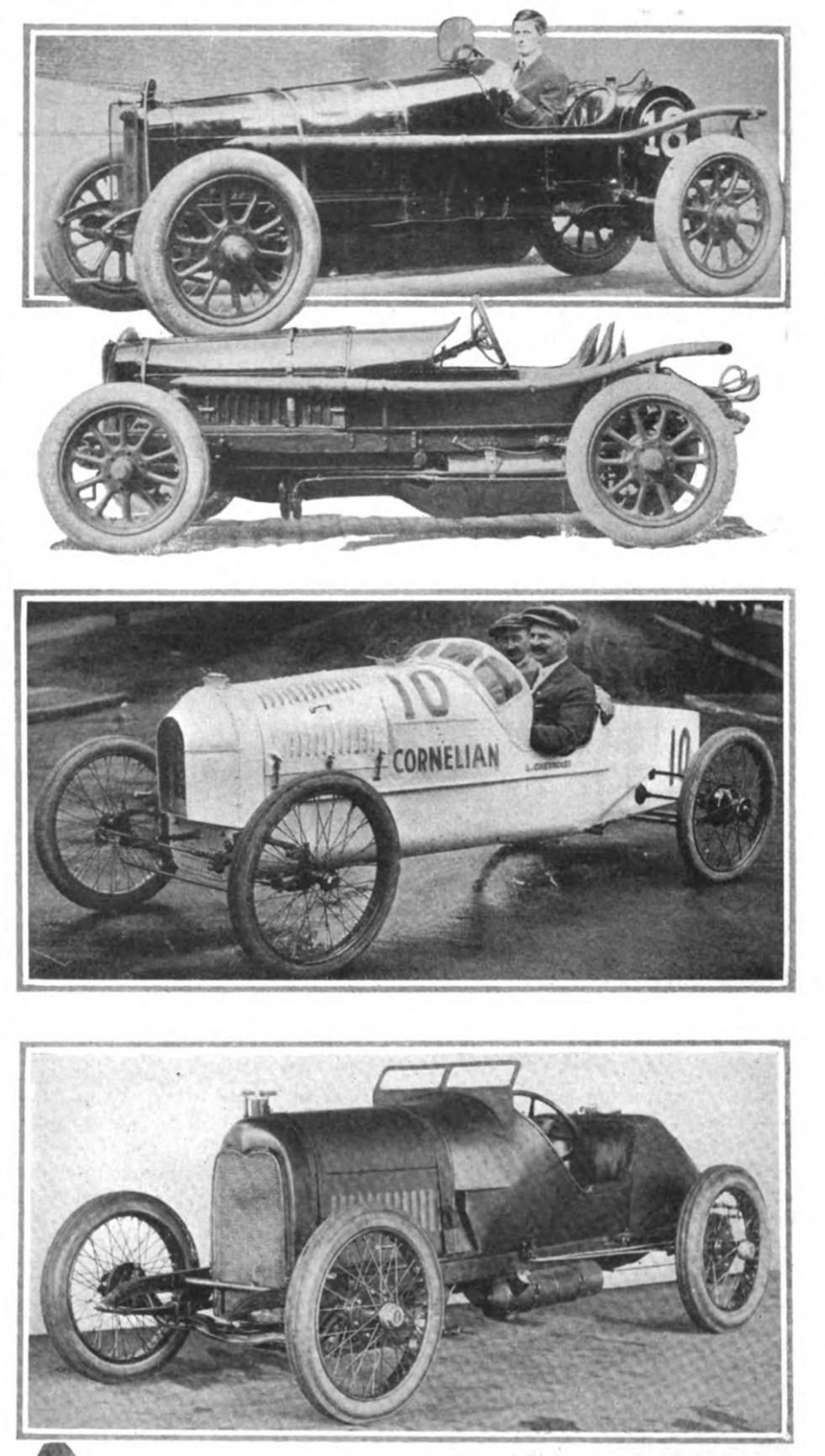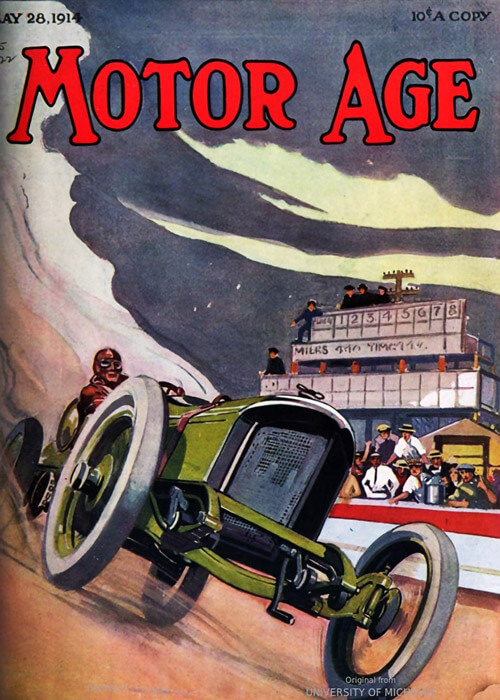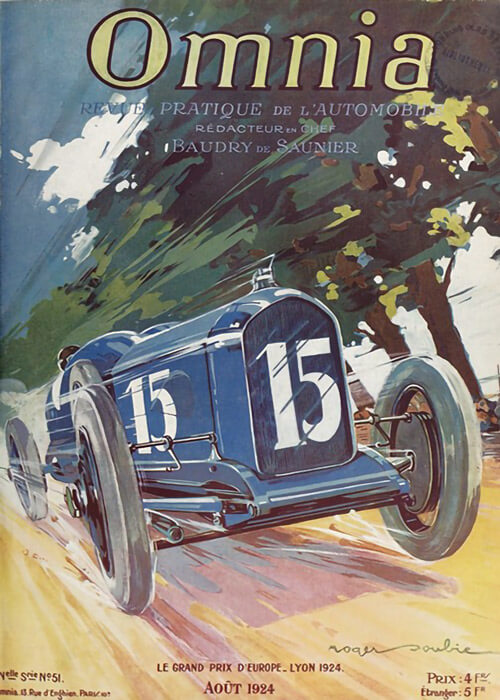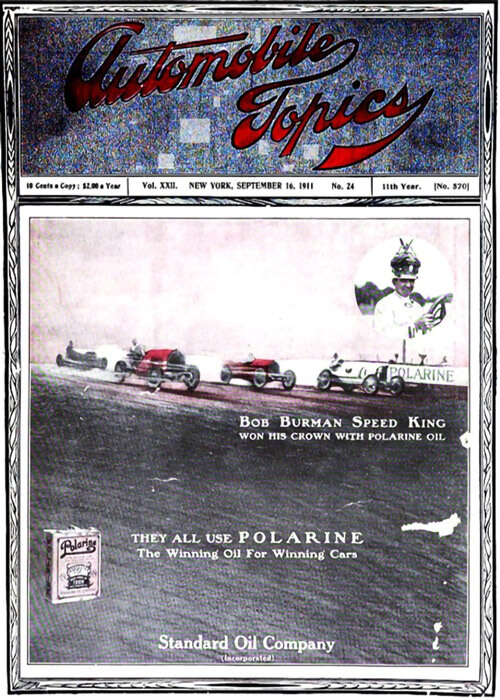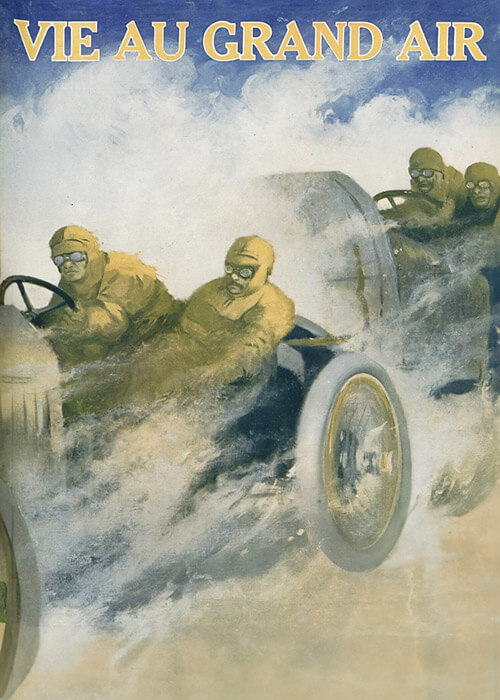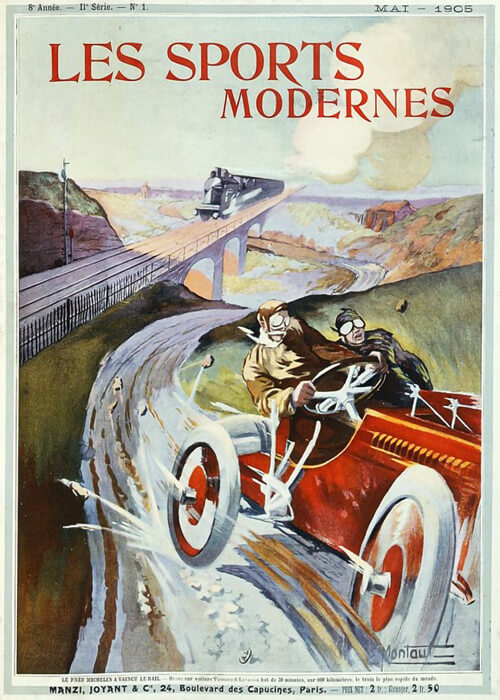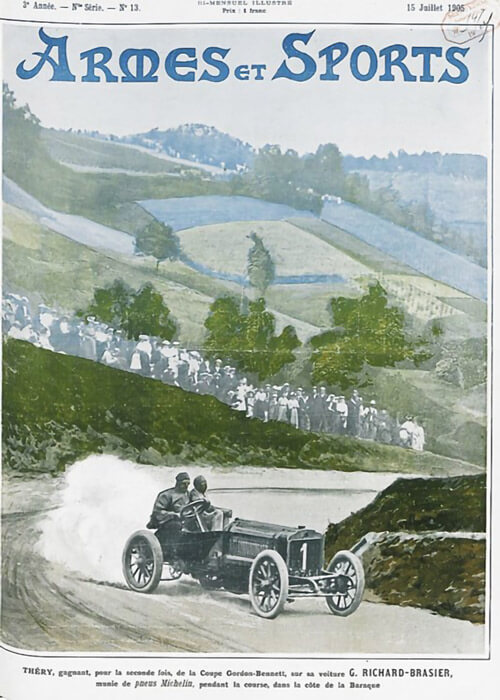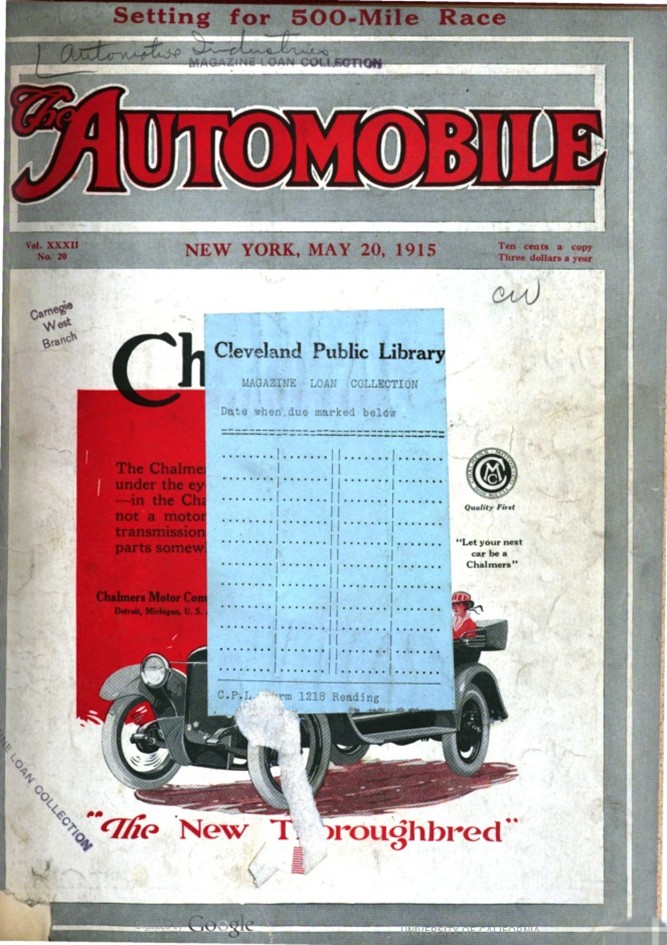
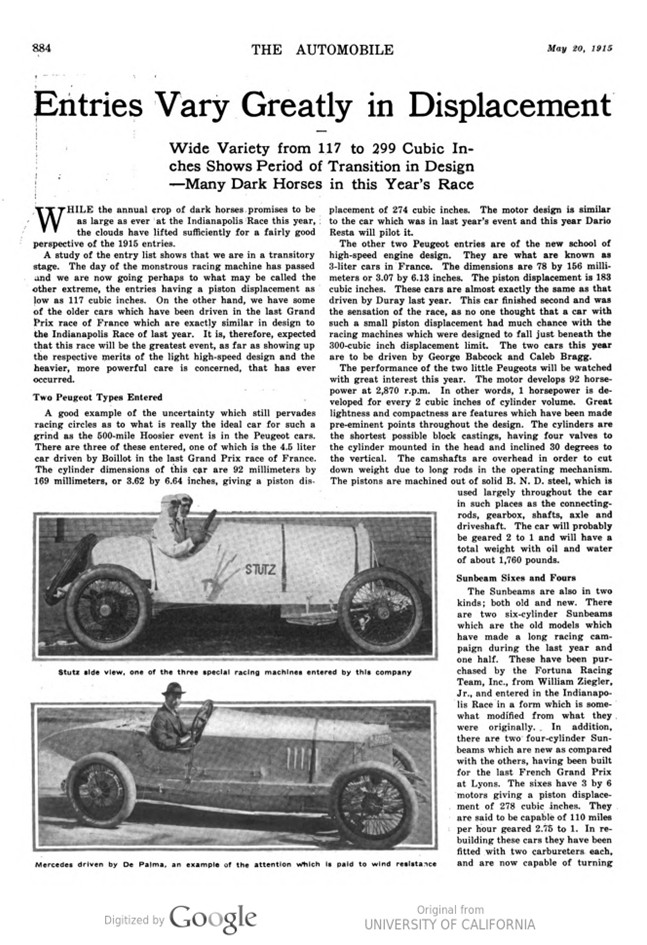
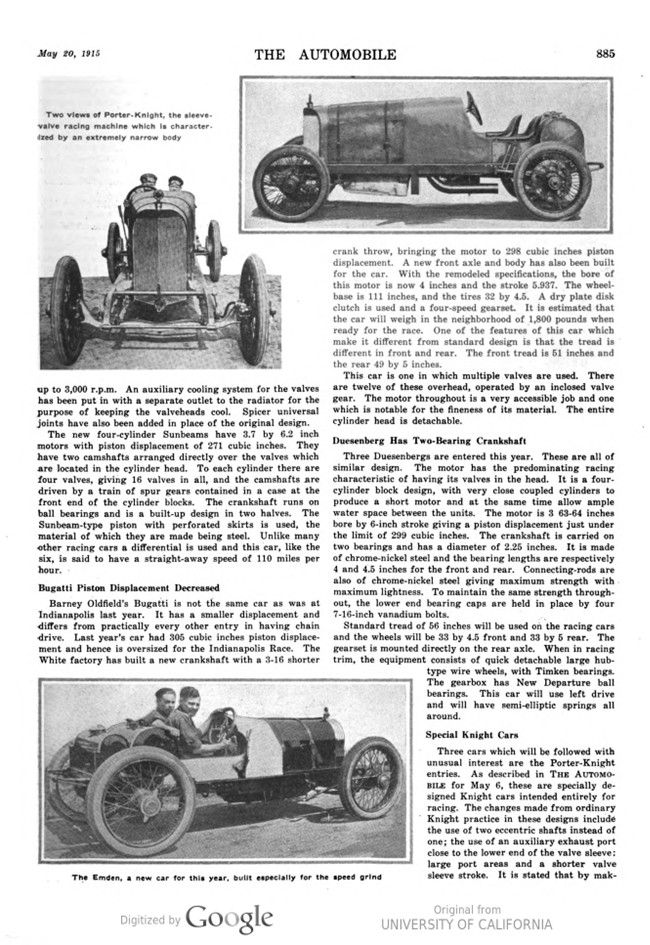
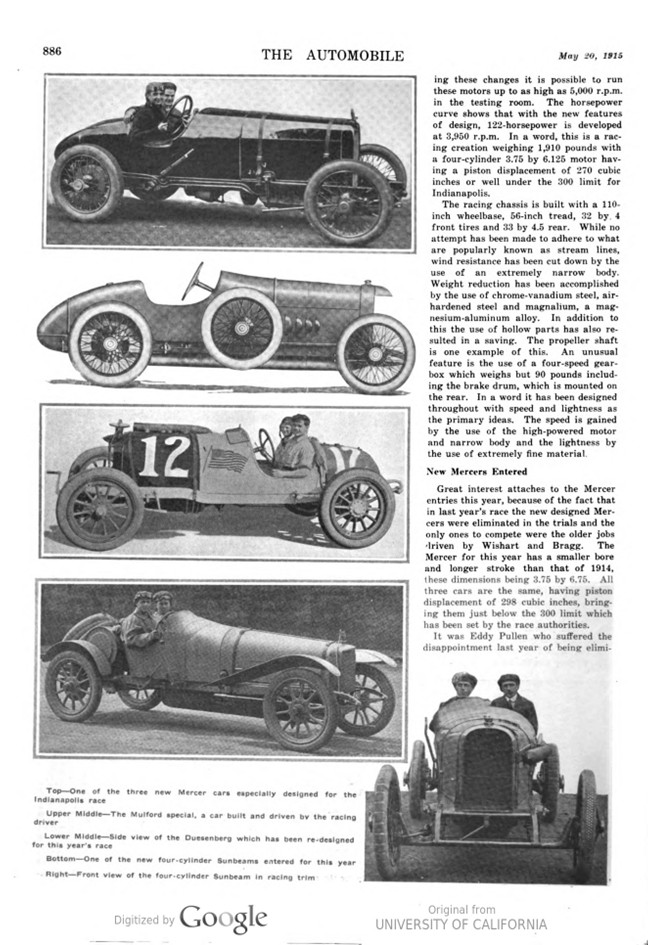
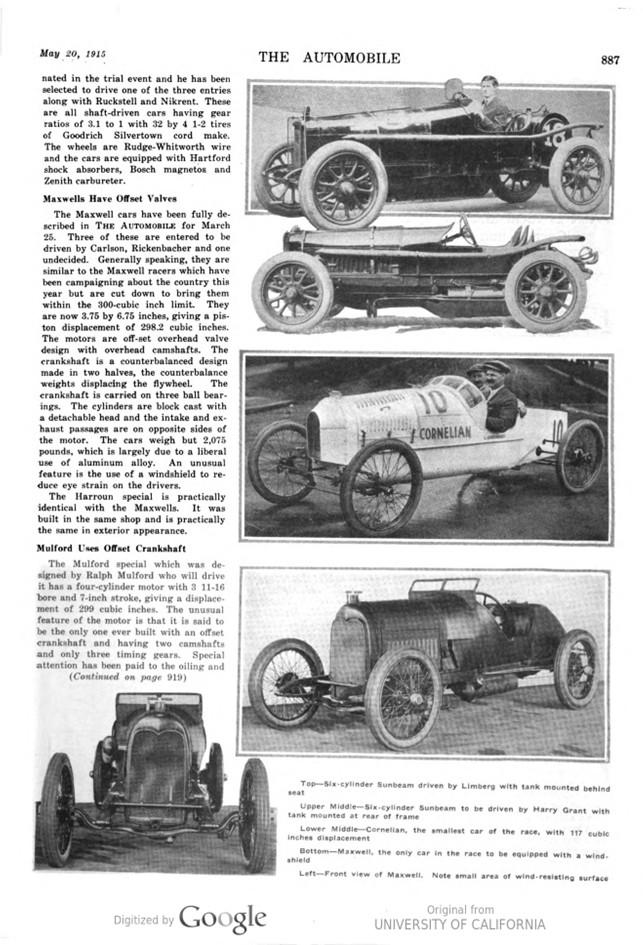
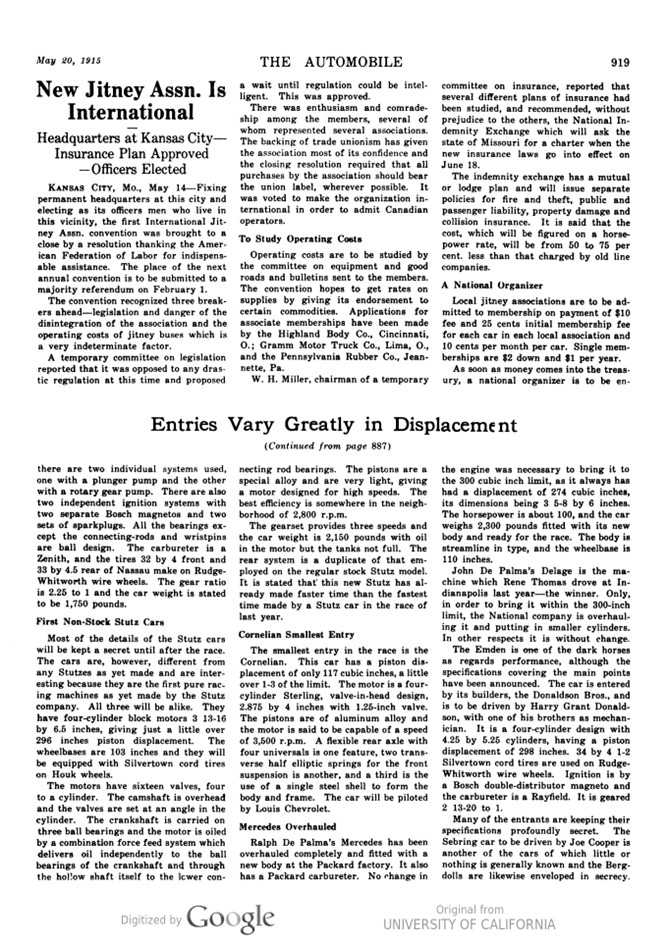
Text and jpegs by courtesy of hathitrust.org www.hathitrust.org, compiled by motorracinghistory.com
The Automobile, Vol. 32, No. 20, May 20, 1915, p. 884 – 887
Entries Vary Greatly in Displacement
Wide Variety from 117 to 299 Cubic Inches Shows Period of Transition in Design
Many Dark Horses in this Year’s Race
WHILE the annual crop of dark horses promises to be as large as ever at the Indianapolis Race this year, the clouds have lifted sufficiently for a fairly good perspective of the 1915 entries.
A study of the entry list shows that we are in a transitory stage. The day of the monstrous racing machine has passed, and we are now going perhaps to what may be called the other extreme, the entries having a piston displacement as low as 117 cubic inches. On the other hand, we have some of the older cars which have been driven in the last Grand Prix race of France which are exactly similar in design to the Indianapolis Race of last year. It is, therefore, expected that this race will be the greatest event, as far as showing up the respective merits of the light high-speed design and the heavier, more powerful care is concerned, that has ever occurred.
Two Peugeot Types Entered
A good example of the uncertainty which still pervades racing circles as to what is really the ideal car for such a grind as the 500-mile Hoosier event is in the Peugeot cars. There are three of these entered, one of which is the 4.5-liter car driven by Boillot in the last Grand Prix race of France. The cylinder dimensions of this car are 92 millimeters by 169 millimeters, or 3.62 by 6.64 inches, giving a piston displacement of 274 cubic inches. The motor design is similar to the car which was in last year’s event and this year Dario Resta will pilot it.
The other two Peugeot entries are of the new school of high-speed engine design. They are what are known as 3-liter cars in France. The dimensions are 78 by 156 millimeters or 3.07 by 6.13 inches. The piston displacement is 183 cubic inches. These cars are almost exactly the same as that driven by Duray last year. This car finished second and was the sensation of the race, as no one thought that a car with such a small piston displacement had much chance with the racing machines which were designed to fall just beneath the 300-cubic inch displacement limit. The two cars this year are to be driven by George Babcock and Caleb Bragg.
The performance of the two little Peugeots will be watched with great interest this year. The motor develops 92 horsepower at 2,870 r.p.m. In other words, 1 horsepower is developed for every 2 cubic inches of cylinder volume. Great lightness and compactness are features which have been made pre-eminent points throughout the design. The cylinders are the shortest possible block castings, having four valves to the cylinder mounted in the head and inclined 30 degrees to the vertical. The camshafts are overhead in order to cut down weight due to long rods in the operating mechanism. The pistons are machined out of solid B. N. D. steel, which is used largely throughout the car in such places as the connecting-rods, gearbox, shafts, axle and driveshaft. The car will probably be geared 2 to 1 and will have a total weight with oil and water of about 1,760 pounds.
Sunbeam Sixes and Fours
The Sunbeams are also in two kinds; both old and new. There are two six-cylinder Sunbeams which are the old models which have made a long racing campaign during the last year and one half. These have been purchased by the Fortuna Racing Team, Inc., from William Ziegler, Jr., and entered in the Indianapolis Race in a form which is some- what modified from what they were originally. In addition, there are two four-cylinder Sun- beams which are new as compared with the others, having been built for the last French Grand Prix at Lyons. The sixes have 3 by 6 motors giving a piston displacement of 278 cubic inches. They are said to be capable of 110 miles per hour geared 2.75 to 1. In re-building these cars they have been fitted with two carbureters each, and are now capable of turning up to 3,000 r.p.m. An auxiliary cooling system for the valves has been put in with a separate outlet to the radiator for the purpose of keeping the valve heads cool. Spicer universal joints have also been added in place of the original design.
The new four-cylinder Sunbeams have 3.7 by 6.2-inch motors with piston displacement of 271 cubic inches. They have two camshafts arranged directly over the valves which are located in the cylinder head. To each cylinder there are four valves, giving 16 valves in all, and the camshafts are driven by a train of spur gears contained in a case at the front end of the cylinder blocks. The crankshaft runs on ball bearings and is a built-up design in two halves. The Sunbeam-type piston with perforated skirts is used, the material of which they are made being steel. Unlike many other racing cars, a differential is used and this car, like the six, is said to have a straight-away speed of 110 miles per hour.
Bugatti Piston Displacement Decreased
Barney Oldfield’s Bugatti is not the same car as was at Indianapolis last year. It has a smaller displacement and differs from practically every other entry in having chain drive. Last year’s car had 305 cubic inches piston displacement and hence is oversized for the Indianapolis Race. The White factory has built a new crankshaft with a 3-16 shorter crank throw, bringing the motor to 298 cubic inches piston displacement. A new front axle and body has also been built for the car. With the remodeled specifications, the bore of this motor is now 4 inches and the stroke 5.937. The wheelbase is 111 inches, and the tires 32 by 4.5. A dry plate disk clutch is used and a four-speed gearset. It is estimated that the car will weigh in the neighborhood of 1,800 pounds when ready for the race. One of the features of this car which make it different from standard design is that the tread is different in front and rear. The front tread is 51 inches and the rear 49 by 5 inches.
This car is one in which multiple valves are used. There are twelve of these overhead, operated by an enclosed valve gear. The motor throughout is a very accessible job and one which is notable for the fineness of its material. The entire cylinder head is detachable.
Duesenberg Has Two-Bearing Crankshaft
Three Duesenbergs are entered this year. These are all of similar design. The motor has the predominating racing characteristic of having its valves in the head. It is a four-cylinder block design, with very close coupled cylinders to produce a short motor and at the same time allow ample water space between the units. The motor is 3 63-64 inches bore by 6-inch stroke giving a piston displacement just under the limit of 299 cubic inches. The crankshaft is carried on two bearings and has a diameter of 2.25 inches. It is made of chrome-nickel steel and the bearing lengths are respectively 4 and 4.5 inches for the front and rear. Connecting-rods are also of chrome-nickel steel giving maximum strength with maximum lightness. To maintain the same strength throughout, the lower end bearing caps are held in place by four 7-16-inch vanadium bolts.
Standard tread of 56 inches will be used on the racing cars and the wheels will be 33 by 4.5 front and 33 by 5 rear. The gearset is mounted directly on the rear axle. When in racing trim, the equipment consists of quick detachable large hub-type wire wheels, with Timken bearings. The gearbox has New Departure ball bearings. This car will use left drive and will have semi-elliptic springs all around.
Special Knight Cars
Three cars which will be followed with unusual interest are the Porter-Knight entries. As described in THE AUTOMOBILE for May 6, these are specially designed Knight cars intended entirely for racing. The changes made from ordinary Knight practice in these designs include the use of two eccentric shafts instead of one; the use of an auxiliary exhaust port close to the lower end of the valve sleeve: large port areas and a shorter valve sleeve stroke. It is stated that by making these changes it is possible to run these motors up to as high as 5,000 r.p.m. in the testing room. The horsepower curve shows that with the new features of design, 122-horsepower is developed at 3,950 r.p.m. In a word, this is a racing creation weighing 1,910 pounds with a four-cylinder 3.75 by 6.125 motor having a piston displacement of 270 cubic inches or well under the 300 limit for Indianapolis.
The racing chassis is built with a 110-inch wheelbase, 56-inch tread, 32 by 4 front tires and 33 by 4.5 rear. While no attempt has been made to adhere to what are popularly known as streamlines, wind resistance has been cut down by the use of an extremely narrow body. Weight reduction has been accomplished by the use of chrome-vanadium steel, air-hardened steel and magnalium, a magnesium-aluminum alloy. In addition to this the use of hollow parts has also resulted in a saving. The propeller shaft is one example of this. An unusual feature is the use of a four-speed gearbox which weighs but 90 pounds including the brake drum, which is mounted on the rear. In a word it has been designed throughout with speed and lightness as the primary ideas. The speed is gained by the use of the high-powered motor and narrow body and the lightness by the use of extremely fine material.
New Mercers Entered
Great interest attaches to the Mercer entries this year, because of the fact that in last year’s race the new designed Mercers were eliminated in the trials and the only ones to compete were the older jobs driven by Wishart and Bragg. The Mercer for this year has a smaller bore and longer stroke than that of 1914, these dimensions being 3.75 by 6.75. All three cars are the same, having piston displacement of 298 cubic inches, bringing them just below the 300 limit which has been set by the race authorities.
It was Eddy Pullen who suffered the disappointment last year of being eliminated in the trial event and he has been selected to drive one of the three entries along with Ruckstell and Nikrent. These are all shaft-driven cars having gear ratios of 3.1 to 1 with 32 by 4 1-2 tires of Goodrich cord make. The wheels are Rudge-Whitworth wire and the cars are equipped with Hartford shock absorbers, Bosch magnetos and Zenith carbureter.
Maxwells Have Offset Valves
The Maxwell cars have been fully described in THE AUTOMOBILE for March 25. Three of these are entered to be driven by Carlson, Rickenbacher and one undecided. Generally speaking, they are similar to the Maxwell racers which have been campaigning about the country this year but are cut down to bring them within the 300-cubic inch limit. They are now 3.75 by 6.75 inches, giving a piston displacement of 298.2 cubic inches. The motors are off-set overhead valve design with overhead camshafts. The crankshaft is a counterbalanced design made in two halves, the counterbalance weights displacing the flywheel. The crankshaft is carried on three ball bearings. The cylinders are block cast with a detachable head and the intake and exhaust passages are on opposite sides of the motor. The cars weigh but 2,075 [pounds, which is largely due to a liberal use of aluminum alloy. An unusual feature is the use of a windshield to reduce eye strain on the drivers.
The Harroun special is practically identical with the Maxwells. It was built in the same shop and is practically the same in exterior appearance.
Mulford Uses Offset Crankshaft
The Mulford special which was de- signed by Ralph Mulford who will drive it has a four-cylinder motor with 3 11-16 bore and 7-inch stroke, giving a displacement of 299 cubic inches. The unusual feature of the motor is that it is said to be the only one ever built with an offset crankshaft and having two camshafts and only three timing gears. Special attention has been paid to the oiling and (Continued on page 919) – (Continued from page 887) there are two individual systems used, one with a plunger pump and the other with a rotary gear pump. There are also two independent ignition systems with two separate Bosch magnetos and two sets of sparkplugs. All the bearings except the connecting-rods and wristpins are ball design. The carbureter is a Zenith, and the tires 32 by 4 front and 33 by 4.5 rear of Nassau make on Rudge-Whitworth wire wheels. The gear ratio is 2.25 to 1 and the car weight is stated to be 1,750 pounds.
First Non-Stock Stutz Cars
Most of the details of the Stutz cars will be kept a secret until after the race. The cars are, however, different from any Stutzes as yet made and are interesting because they are the first pure racing machines as yet made by the Stutz company. All three will be alike. They have four-cylinder block motors 3 13-16 by 6.5 inches, giving just a little over 296 inches piston displacement. The wheelbases are 103 inches and they will be equipped with Silvertown cord tires on Houk wheels.
The motors have sixteen valves, four to a cylinder. The camshaft is overhead and the valves are set at an angle in the cylinder. The crankshaft is carried on three ball bearings and the motor is oiled by a combination force feed system which delivers oil independently to the ball bearings of the crankshaft and through the hollow shaft itself to the lower connecting rod bearings. The pistons are a special alloy and are very light, giving a motor designed for high speeds. The best efficiency is somewhere in the neighborhood of 2,800 r.p.m.
The gearset provides three speeds and the car weight is 2,150 pounds with oil in the motor but the tanks not full. The rear system is a duplicate of that employed on the regular stock Stutz model. It is stated that this new Stutz has already made faster time than the fastest time made by a Stutz car in the race of last year.
Cornelian Smallest Entry
The smallest entry in the race is the Cornelian. This car has a piston displacement of only 117 cubic inches, a little over 1-3 of the limit. The motor is a four-cylinder Sterling, valve-in-head design, 2.875 by 4 inches with 1.25-inch valve. The pistons are of aluminum alloy and the motor is said to be capable of a speed of 3,500 r.p.m. A flexible rear axle with four universals is one feature, two transverse half elliptic springs for the front suspension is another, and a third is the use of a single steel shell to form the body and frame. The car will be piloted by Louis Chevrolet.
Mercedes Overhauled
Ralph De Palma’s Mercedes has been overhauled completely and fitted with a new body at the Packard factory. It also has a Packard carbureter. No change in the engine was necessary to bring it to the 300 cubic inch limit, as it always has had a displacement of 274 cubic inches, its dimensions being 3 5-8 by 6 inches. The horsepower is about 100, and the car weighs 2,300 pounds fitted with its new body and ready for the race. The body is streamline in type, and the wheelbase is 110 inches.
John De Palma’s Delage is the machine which Rene Thomas drove at Indianapolis last year – the winner. Only, in order to bring it within the 300-inch limit, the National company is overhauling it and putting in smaller cylinders. In other respects it is without change.
The Emden is one of the dark horses as regards performance, although the specifications covering the main points have been announced. The car is entered by its builders, the Donaldson Bros., and is to be driven by Harry Grant Donaldson, with one of his brothers as mechanician. It is a four-cylinder design with 4.25 by 5.25 cylinders, having a piston displacement of 298 inches. 34 by 4 1-2 Silvertown cord tires are used on Rudge-Whitworth wire wheels. Ignition is by a Bosch double-distributor magneto and the carbureter is a Rayfield. It is geared 2 13-20 to 1.
Many of the entrants are keeping their specifications profoundly secret. The Sebring car to be driven by Joe Cooper is another of the cars of which little or nothing is generally known and the Berg- dolls are likewise enveloped in secrecy.
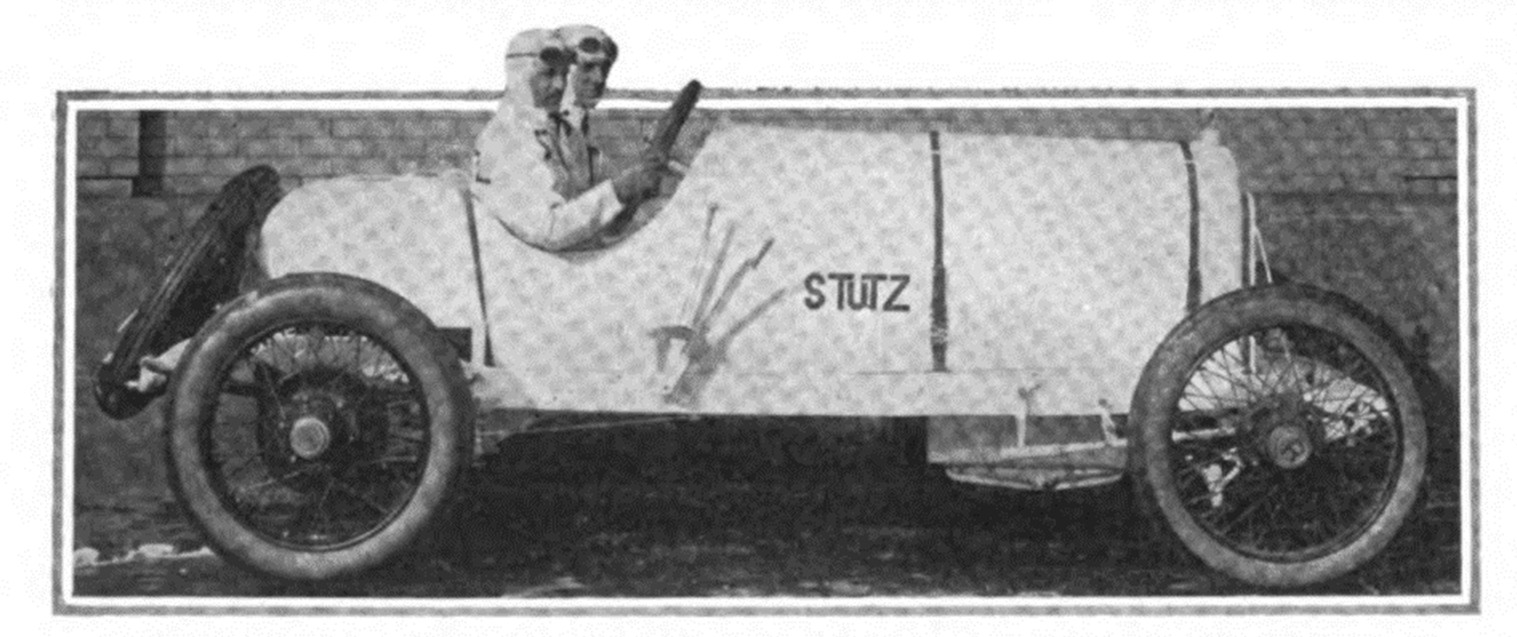
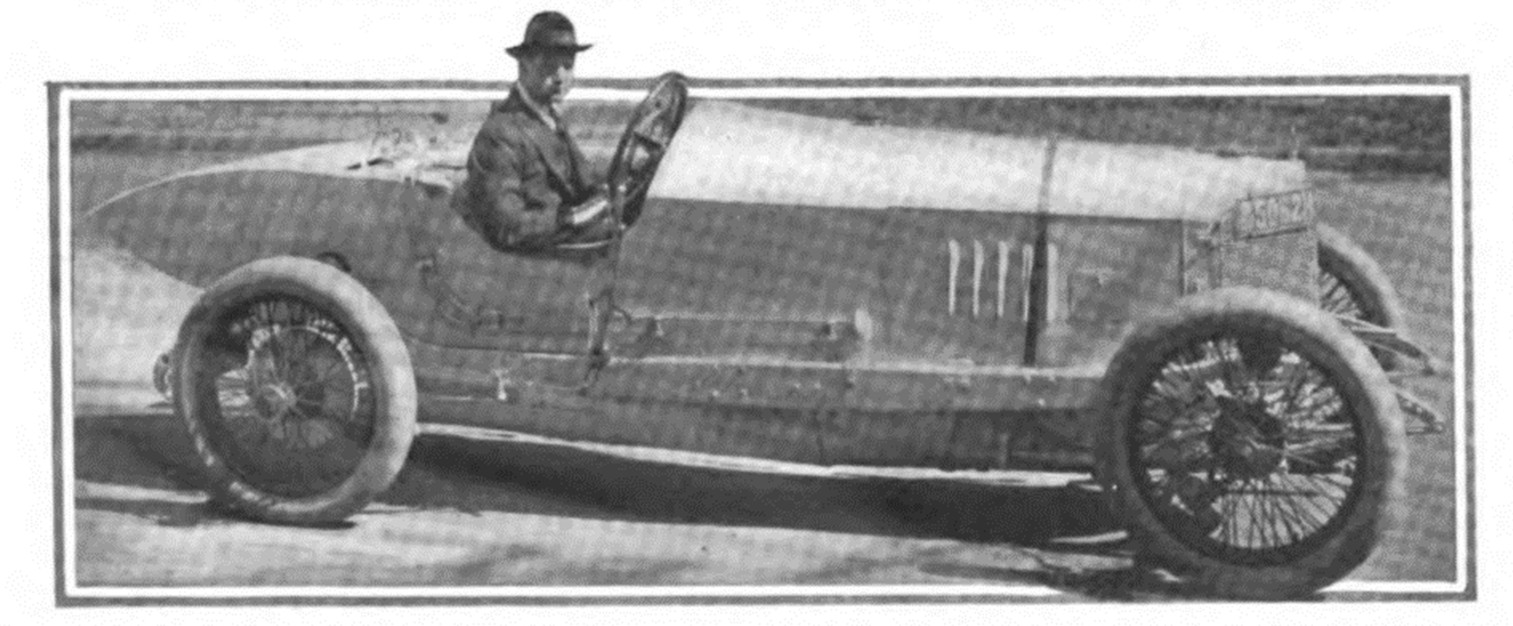
Photo captions. – May 20, 1915 – The Automobile
Page 885.
Two views of Porter-Knight, the sleeve-valve racing machine which is characterized by an extremely narrow body
The Emden, a new car for this year, built especially for the speed grind.
Caption Page 886.
Top – One of the three new Mercer cars especially designed for the Indianapolis race
Upper Middle – The Mulford special, a car built and driven by the racing driver
Lower Middle – Side view of the Duesenberg which has been redesigned for this year’s race
Bottom – One of the new four-cylinder Sunbeams entered for this year
Right – Front view of the four-cylinder Sunbeam in racing trim
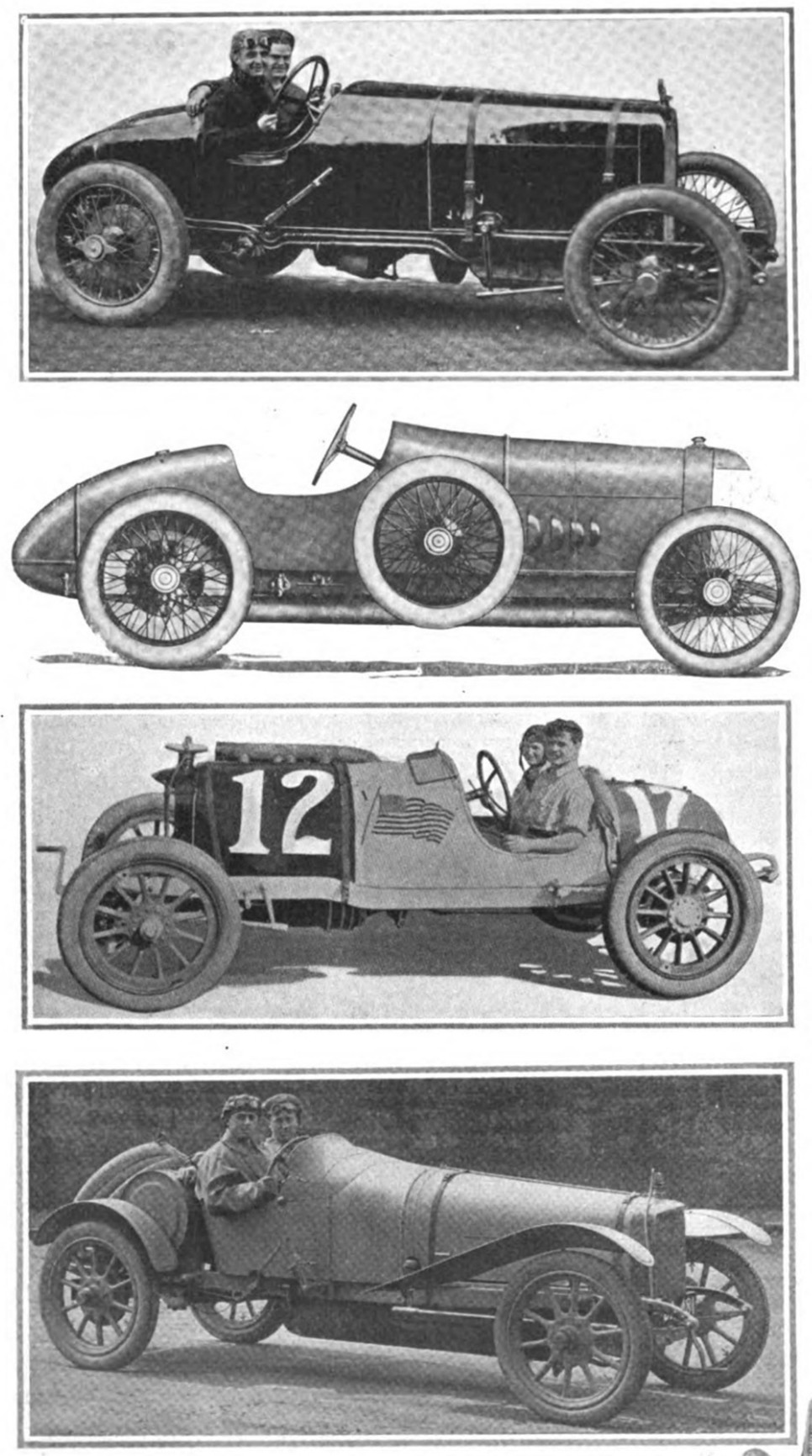
Caption Page 887.
Top – Six-cylinder Sunbeam driven by Limberg with tank mounted behind seat
Upper Middle – Six-cylinder Sunbeam to be driven by Harry Grant with tank mounted at rear of frame
Lower Middle – Cornelian, the smallest car of the race, with 117 cubic inches displacement
Bottom – Maxwell, the only car in the race to be equipped with a windshield
Left – Front view of Maxwell. Note small area of wind-resisting surface
